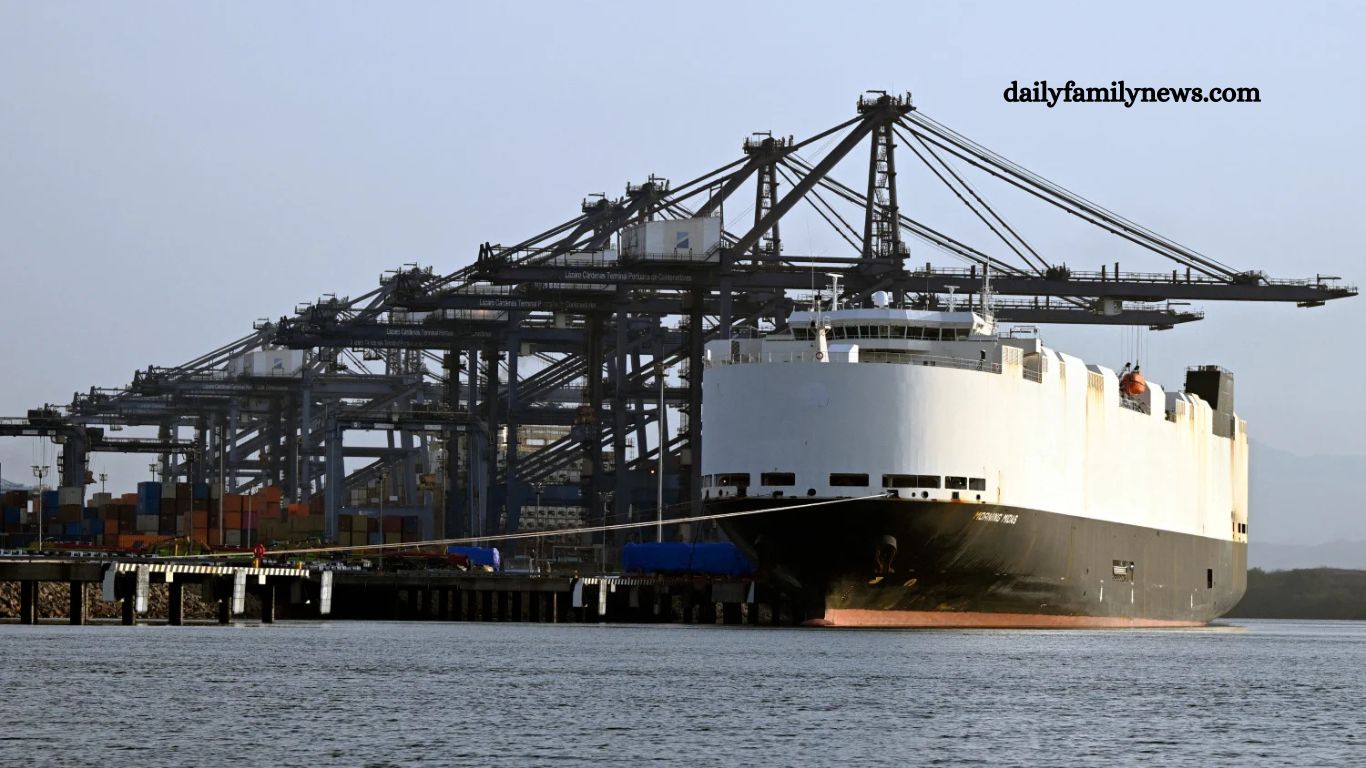A cargo ship transporting a large shipment of electric vehicles, hybrids, and conventional cars recently caught fire and sank off the coast of Alaska, causing significant disruption to automotive deliveries. The vessel, Morning Midas, was sailing from China to Mexico when the fire broke out approximately three weeks ago, about 360 nautical miles offshore.
Despite firefighting efforts and a successful crew evacuation, the blaze burned for several days before the ship ultimately sank, taking thousands of vehicles and tons of fuel with it. Authorities are now investigating the cause of the fire, with particular attention on whether the electric vehicles or their lithium-ion batteries played a role.
This incident raises pressing concerns about the safety and environmental impact of shipping electric vehicles across the globe.
Read More: Essential AI Tools Students Must Use in 2025 to Improve Their Grades
Incident Overview: The Morning Midas Disaste
The vessel involved, Morning Midas, was a 600-foot cargo ship sailing under the Liberian flag and managed by the international shipping company Zodiac Maritime. According to a report by The New York Times, the ship caught fire approximately three weeks ago, roughly 360 nautical miles off the coast of Alaska.
Originally en route from China to Mexico, the Morning Midas was carrying a vast automotive cargo, including 70 electric vehicles, 681 hybrids, and over 2,000 conventional vehicles, as confirmed by the U.S. Coast Guard.
The Fire, Weather Damage, and Sinking
The fire aboard the Morning Midas was first detected on June 3. Despite firefighting efforts, the blaze burned for about a week. Meanwhile, the ship also endured severe weather conditions that further compromised its integrity. Ultimately, the vessel sank, taking all its cargo with it.
Notably, the ship was also transporting approximately 1,800 metric tons of fuel—a standard necessity for such a lengthy ocean voyage but a significant environmental concern when lost at sea due to potential oil spills.
Crew Safety and Evacuation
Thankfully, all 22 crew members aboard the Morning Midas were safely evacuated. They abandoned the ship using lifeboats soon after the fire broke out when it became evident that the fire could not be contained. A nearby commercial vessel rescued the crew shortly thereafter.
Investigations and Concerns About Electric Vehicles
Both Liberian authorities and Zodiac Maritime are launching investigations to determine the precise cause of the fire. At this stage, it remains unclear whether the electric vehicles or their lithium-ion batteries played any role in igniting or exacerbating the blaze.
Lithium-ion batteries, while essential for EV performance, carry risks in fire situations. They can overheat and are notoriously difficult to extinguish once ignited. Firefighters also face chemical exposure hazards and the threat of reignition, complicating containment efforts.
Environmental and Industry Implications
The sinking of the Morning Midas raises important questions about the safety protocols surrounding the maritime transportation of electric vehicles and their batteries. As the EV market grows, shipping companies and regulators will need to adapt to these new challenges to ensure both environmental safety and the security of crew and cargo.
Frequently Asked Questions
What happened to the cargo ship near Alaska?
A cargo ship named Morning Midas caught fire while carrying a large shipment of electric vehicles, hybrids, and conventional cars. After burning for several days and facing severe weather damage, it eventually sank about 360 nautical miles off the Alaskan coast.
Were there any casualties in the incident?
No, all 22 crew members were safely evacuated by lifeboats and rescued by a commercial ship shortly after the fire started.
How many vehicles were lost in the sinking?
The ship was carrying approximately 70 electric vehicles, 681 hybrids, and over 2,000 conventional vehicles, all of which were lost when the ship sank.
Did the electric vehicles cause the fire?
Investigations are ongoing. It is not yet confirmed whether the EVs or their lithium-ion batteries contributed to the fire.
Is there an environmental risk from the sinking?
Yes, the ship was carrying about 1,800 metric tons of fuel, raising concerns about potential oil spills and environmental damage in the area.
Conclusion
The sinking of the Morning Midas highlights the complex challenges of transporting electric vehicles and traditional automobiles across vast oceans. While the crew’s safe evacuation is a relief, the loss of thousands of vehicles and the environmental risks from the ship’s fuel cargo are significant concerns.
As investigations continue, the incident underscores the importance of reviewing safety protocols, especially regarding the transport of lithium-ion batteries aboard cargo ships. With the global shift toward electric vehicles accelerating, ensuring safe and secure shipping practices will be critical to protecting both human life and the environment in future maritime operations.
